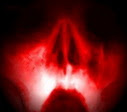
Editor: Ian Haydn Smith
Wallflower Press, 2008
422 pages
Ever since 1963, when it was first published, the International Film Guide has enjoyed the unrivalled reputation as the most authoritative and trusted source of information on world cinema. For a good while Variety stood behind it, then Guardian briefly, and now, after one year's pause (there was no 2007 edition), with Turner Classic Movies acting as sponsors, Wallflower Press is relaunching this invaluable publication.
The new editor, Ian Haydn Smith, admits in his introduction that he has a daunting task to fill the shoes of his predecessors, but judging from this new volume it seems that he managed to live up to the expectations that the tradition and title merit.
The 44th annual volume bridges the last year's gap by covering the international film production from both 2006 and 2007. It assesses the movie industry developments and more than 1,000 films from 98 countries across Europe, North and South America, Africa, Asia and Australia. Like the previous volumes, this one is organized on country-by-country basis, each entry written by a competent, authoritative correspondent from that country. The accounts include news, reviews and stills (most of them in color), festival information, movie going trends, box office and more.
A matchless guide to anyone interested in international cinema, it is the single place where one can find information from countries that may be blank spots even on the maps of most adventurous cinephiles. Afghanistan, Algeria, Armenia, Belarus, Bolivia, Bulgaria, Ecuador, Iceland, Kenya, Peru, Serbia, Tunisia and Ukraine are just some of those rarely trodden paths, mapped out by this volume. Of course, there is also plenty of coverage from the cinematographies of countries we're more accustomed to keep a watch on, like Australia, Brazil, China, France, Germany, Italy, Japan, Mexico, etc. including the revelation of the last few years – Romania. Romania's last year win of Palme d'Or in Cannes for 4 MONTHS, 3 WEEKS, 2 DAYS brought to our attention a fresh vision, also found in CALIFORNIA DREAMIN' (by the prematurely departed Cristian Nemescu) and numerous other titles from what this guide accurately recognizes as "one of the vital cinemas at the moment".
It is revelations like these that make this book invaluable to anyone willing to explore the possibilities of cinema beyond their nearest multiplex. I have already marked several dozens of titles for my personal 'wanted' list, and the wide range of possibilities will provide a good deal of potentially interesting titles for the widest range of interests. It is impossible to find so much important data about the most recent film production compressed and collected in one place as it is in the International Film Guide.
The volume includes information on film festivals (50 pages of basic info + cream of the crop coverage), top-grossing films, major film awards, film schools, film archives, worldwide box-office reports, 10 pages of DVD releases of cinema classics, and more.
This is not to say that this book covers only the 'serious' and 'art' cinema: while a good deal of attention belongs to the titles one could only see at film festivals and (if one is lucky and persistent) on DVD, this guide also represents the basic trends in the world cinema, including genre filmmaking: for example, Guillermo del Toro is selected as one of the five 'Directors of the year' – a special part of the book which details the careers of the most promising directors in the world. The New Zealand entry does not skip titles like BLACK SHEEP, PERFECT CREATURE or THE TATTOOIST, and horror films from other unlikely places (like Norway) are also revealed.
Other parts of the book worth mentioning are the 'In Memoriam' section (paying respect to the great stars and directors that passed away in the previous year), 'Country focus: Germany', Industry focus on documentary, and the special focus on DVD market.
Both entertaining and informative, easy to follow, with entries brief and to the point, with a sharp and reliable critical evaluation of titles and authors covered, this heavy volume will certainly deliver your money's worth of guidance through the farthest reaches and the cutting edges of international cinema. Indispensable to film critics and other professionals, the International Film Guide is at the same time essential to any serious cinephile and any curious, investigative film viewer in the world. Roger Ebert once wrote: "The day I was hired as a film critic, I went to the bookstore and came home with a copy of the International Film Guide, and the current edition has been on my shelf ever since." Check out to see why.
For the sheer number of intriguing titles I first heard about here, this book can not be compared to any other!






































